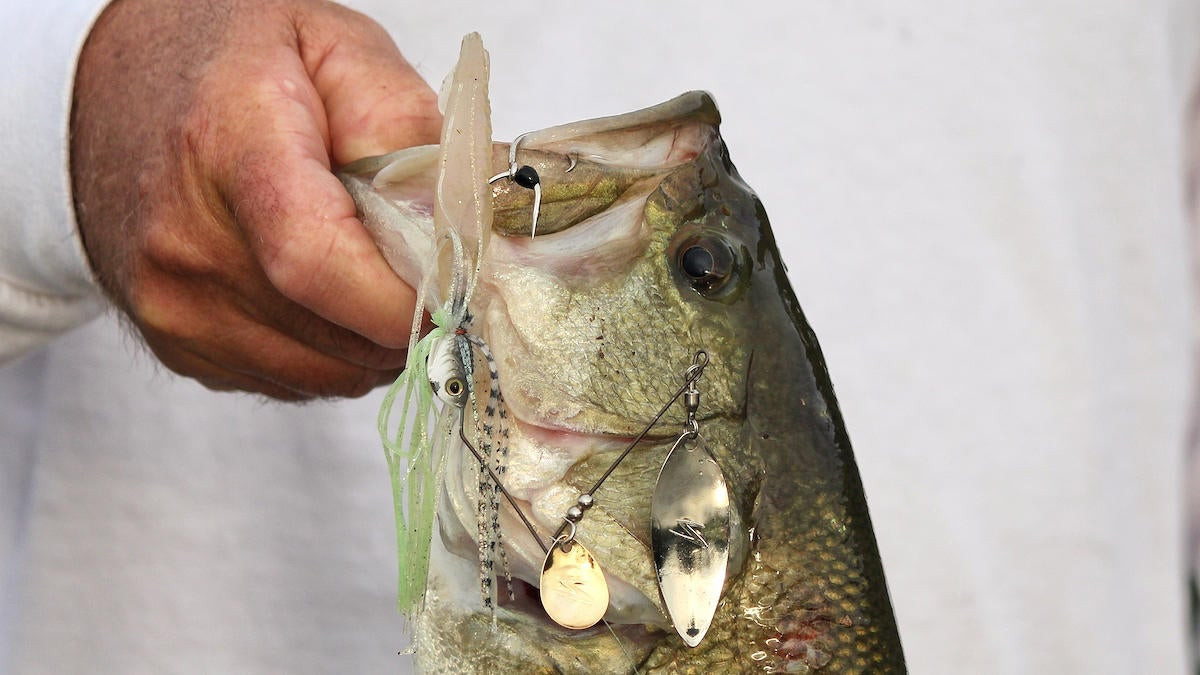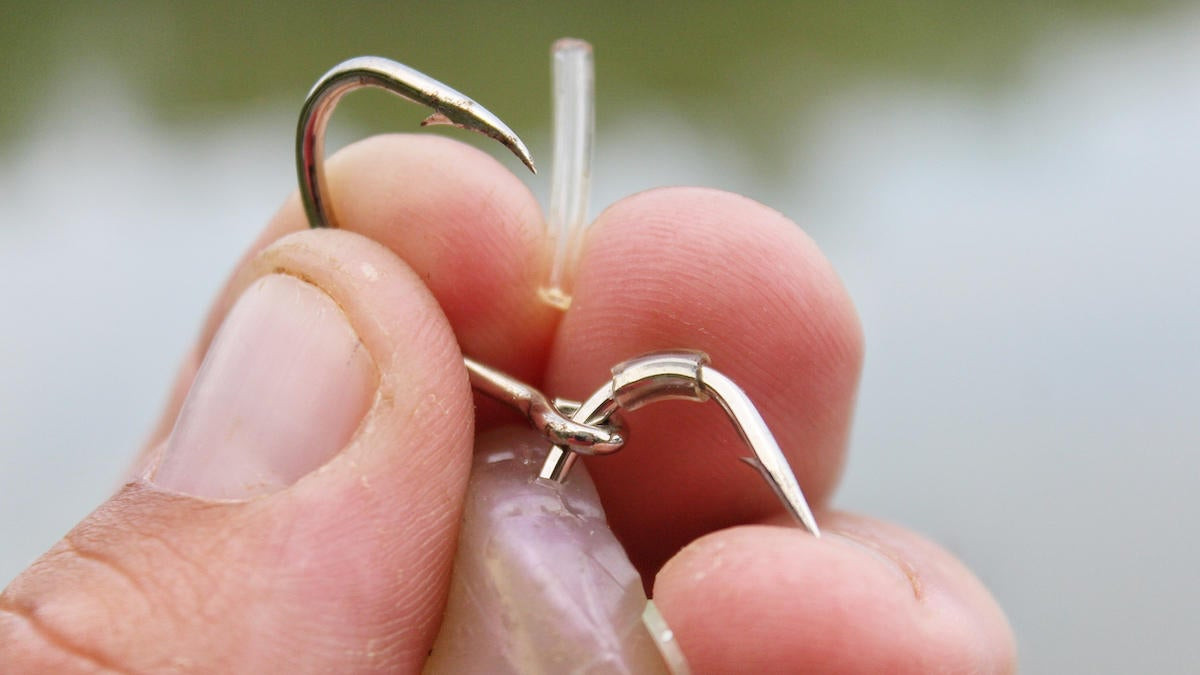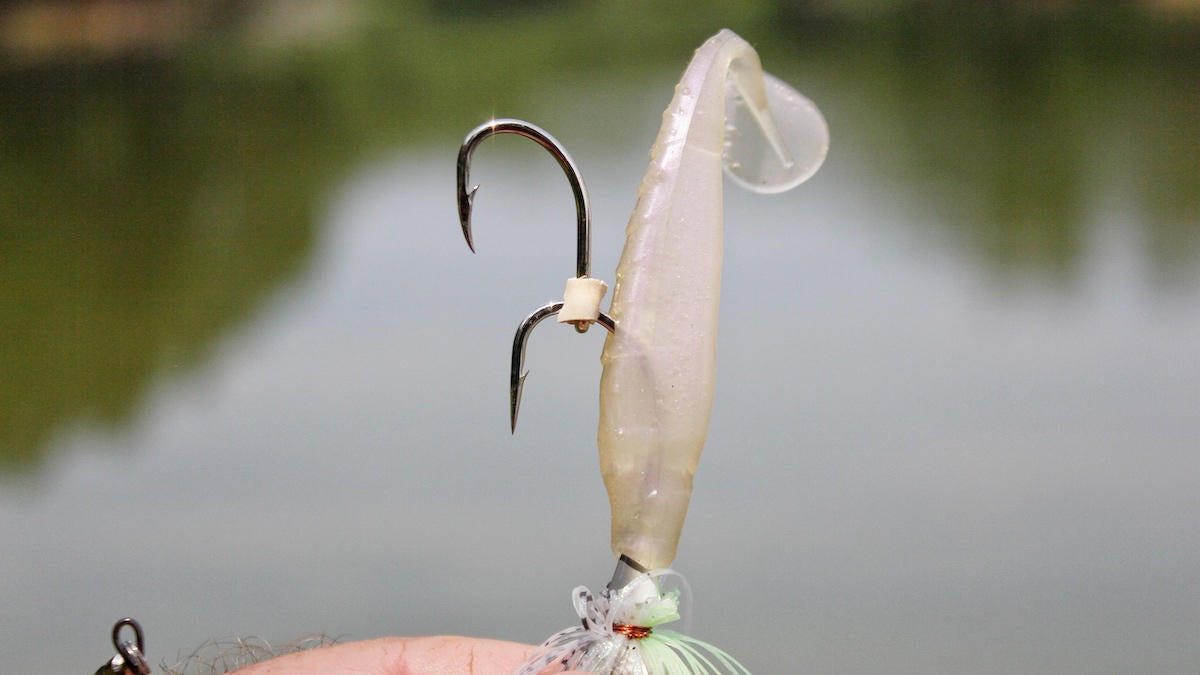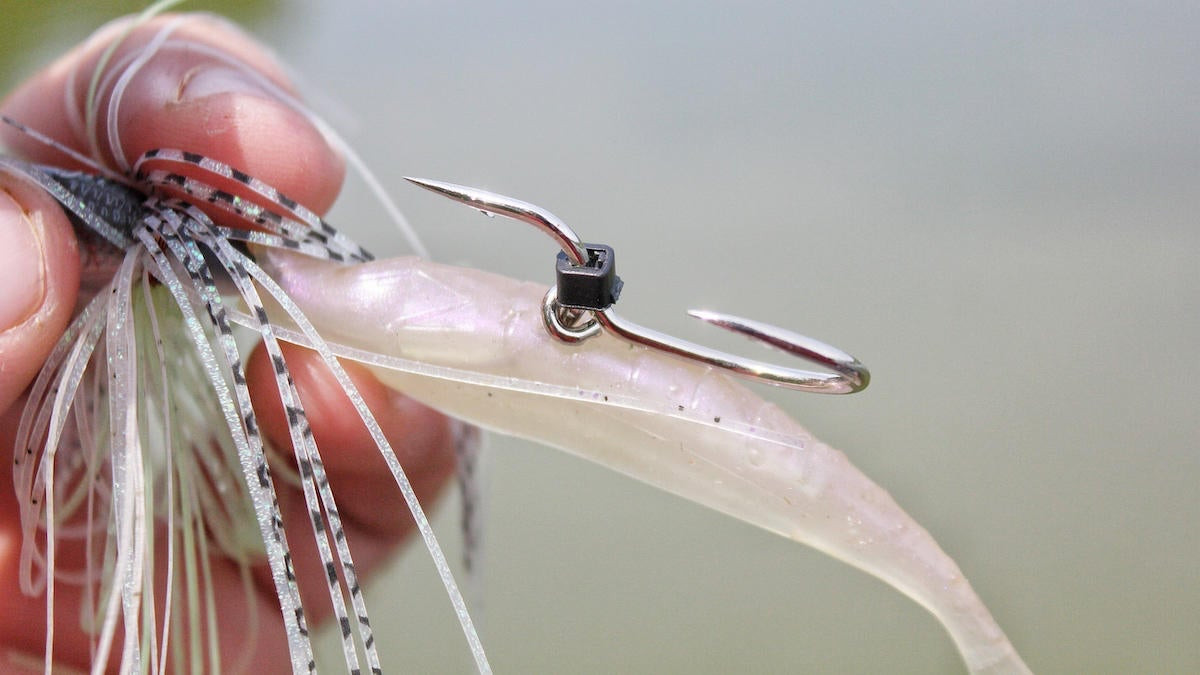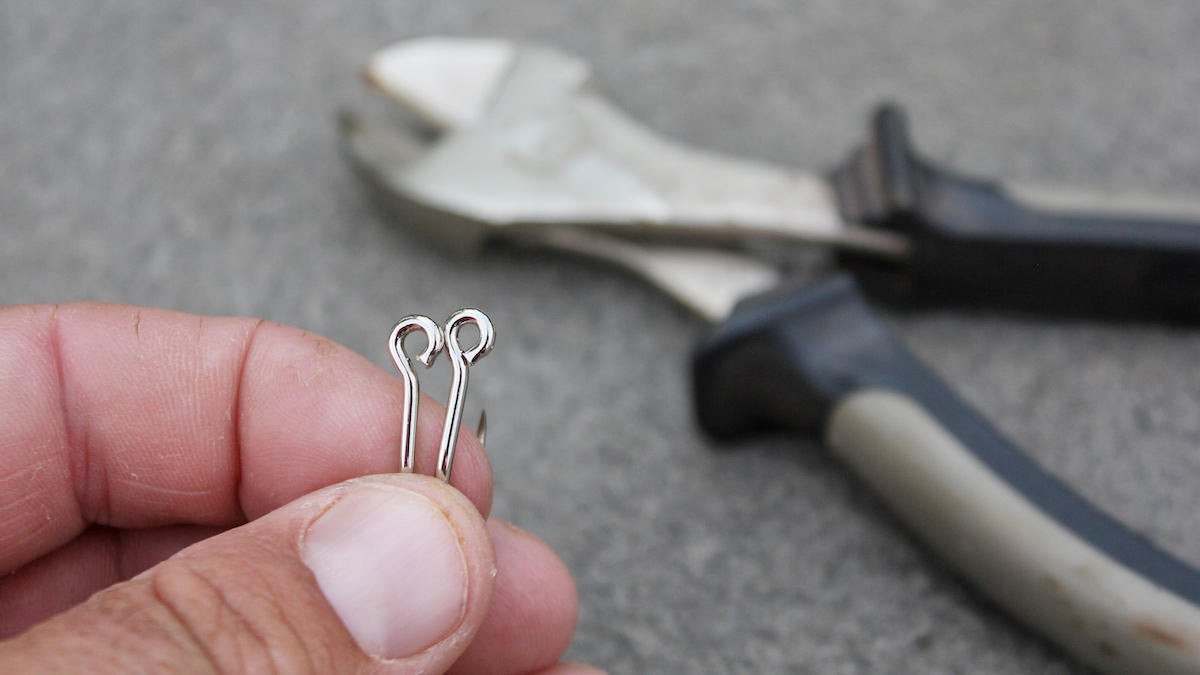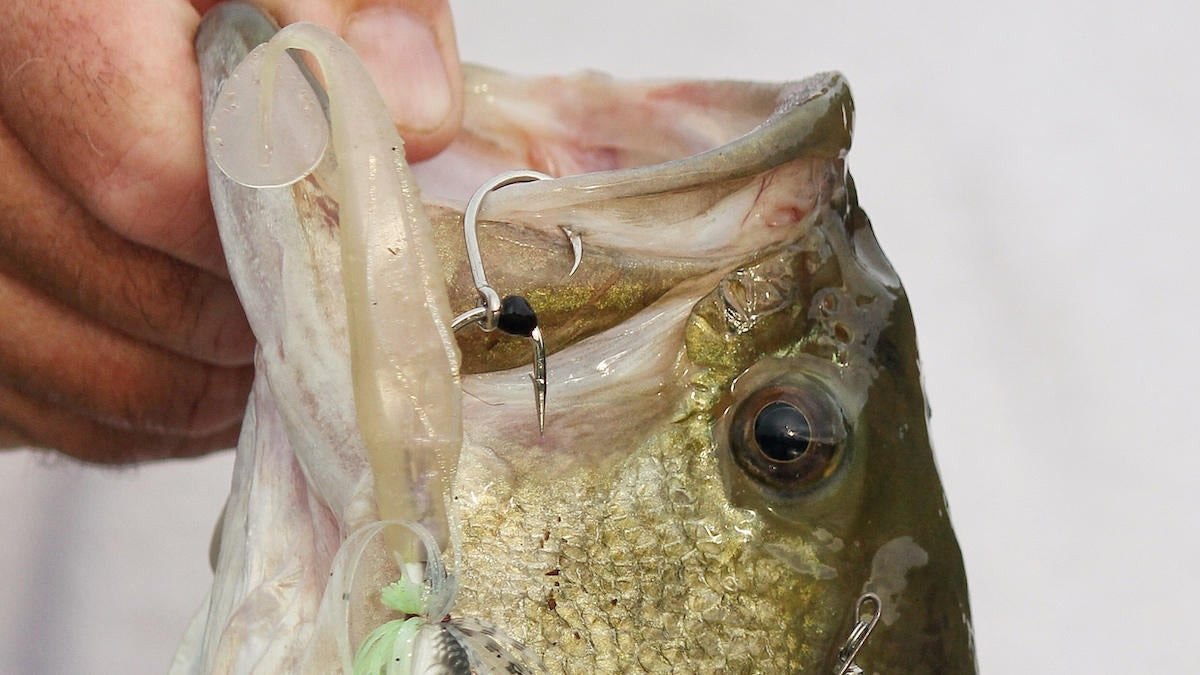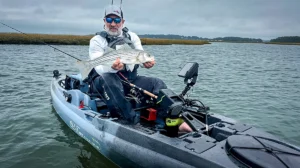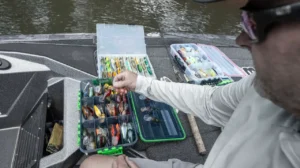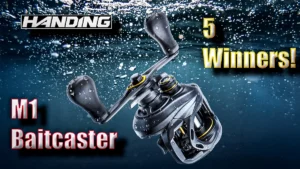The need for trailer hooks is an interesting topic to discuss. I know a lot of really good anglers who don’t use them on anything. I, however, almost always use them on buzzbaits, spinnerbaits and ChatterBaits. And I’ve caught dozens of key fish that were either only hooked by the trailer hook or were pinned way better by the combination fo the trailer hook and the main hook.
But this article isn’t intended to convince you to use a trailer hook as much as it’s here to give you some options on how to secure a trailer hook should you choose to throw one. So let’s get into that.
Tubing on the main hook shaft
This is my preferred method and the one I use most of the time. We figured out years ago that you could take spacer tubing and slide it up on your main hook to hold a trailer hook in place. My dad found the tubing on Jann’s Netcraft while trying to build some spinnerbaits and originally ordered it for its intended purpose of keeping spinnerbait blades separate on the arm of the bait.
However, it’s the perfect diameter to slide over the barb of the main hook and not quite allow the eye of the trailer hook to slide back over it and reach the barb. I prefer this to one of the main traditional ways of securing a trailer hook (that we’ll discuss next) because it allows the hook to swing freely and takes some of the leverage away from a bass trying to throw the bait.
Rubber over the eye of the trailer hook
This is probably the way most people started off securing a trailer hook and the way I’m sure a lot of people still do. You simply slide a piece of rubber or plastic tubing over the eye of the trailer hook and then run the main hook through the tubing and the eye of the hook simultaneously. This works better for trailer hooks that have a large eye as they would slip past the spacer tubing that I prefer from the previous method.
And I’ll still use this myself in very particular situations where I want the trailer hook to stay in a fixed position, like fishing a buzzbait through willow grass. If the trailer hook is free to flop around, you run the risk of snagging more grass. If the hook’s orientation is locked in and upward like the main hook of the buzzbait, the bait is much more weedless.
Most trailer hooks will come with some sort of plastic or rubber material like this in the package. But if your preferred trailer hook doesn’t, you can find this type of tubing anywhere from a hobby and craft store to a hardware store. You can also take a wide rubber band, cut it to where it’s basically a strip of rubber and no longer a loop, wrap it around the eye of your trailer hook to where the band doubles up on at least one side of the eye and then run your main hook through. Then cut the excess rubber band off and you’re good to go.
Small Ziptie
You can actually use a 4-inch Ziptie to secure a trailer hook in a couple different ways. My dad likes to put a trailer hook on the main hook and then run the point of the main hook through the clicker part of a small Ziptie until it passes the barb. Then he’ll cut all of the Ziptie off except for the clicker part and that works extremely well at preventing the trailer hook from coming back off the bait.
You can also take a Ziptie and use it to secure a trailer hook by looping it around the main hook and then running the end of the Ziptie through the clicker the way that it was designed. Pull it tight and cut the excess off and there’s no way for the fish can pull the trailer hook off.
Open and close it
We prefer to use a little Mustad circle hook as our trailer hook that was actually designed for saltwater fishing. One of our buddy’s, Neal Webster, put us onto using this hook as a trailer hook years ago and it does a phenomenal job at locking onto a fish.
But, since it wasn’t designed to be a trailer hook, the eye is just a little too small to get some hooks through. When we run into a bait with a hook that’s too big, we’ll take side cutters and open the eye of this hook up just enough to slip it onto the main hook of the bait. Then using pliers again we’ll close the eye back shut.
The great part about this is that you don’t have to add anything else to keep the trailer hook on the main hook. The eye of the trailer hook is too small to pass back over the point. And this actually allows the utmost freedom of movement for your trailer hook helping to prevent the bass from gaining leverage.
Decoy Versatile Keeper
Lastly there is a new product that I found which works kind of like the spacer tubing, but will allow you to use trailer hooks with larger diameter eyes as well. Simply place your trailer hook on your main hook and then slide one of these keepers over the main hook point and you’re good to go.
Side note: The Decoy Versatile Keeper is good for other things as well, like securing a soft-plastic trailer in place. Say your favorite jig doesn’t have the best trailer keeper on in it, or none at all for that matter. Just slide your soft plastic up the hook shaft and into place and then slide the Versatile Keeper up the hook and right up against the trailer and you’re done. The soft plastic trailer can no longer slide down the hook during your cast.
In conclusion
All of these methods will work some of the time when using a trailer hook. Some will work all of the time and some will be better suited for certain situations. The greatest recommendation I can make as it pertains to trailer hooks, is just to try them. If you don’t see an increase in your bite to catch ratio, then don’t fool with them anymore. But I think you will.


